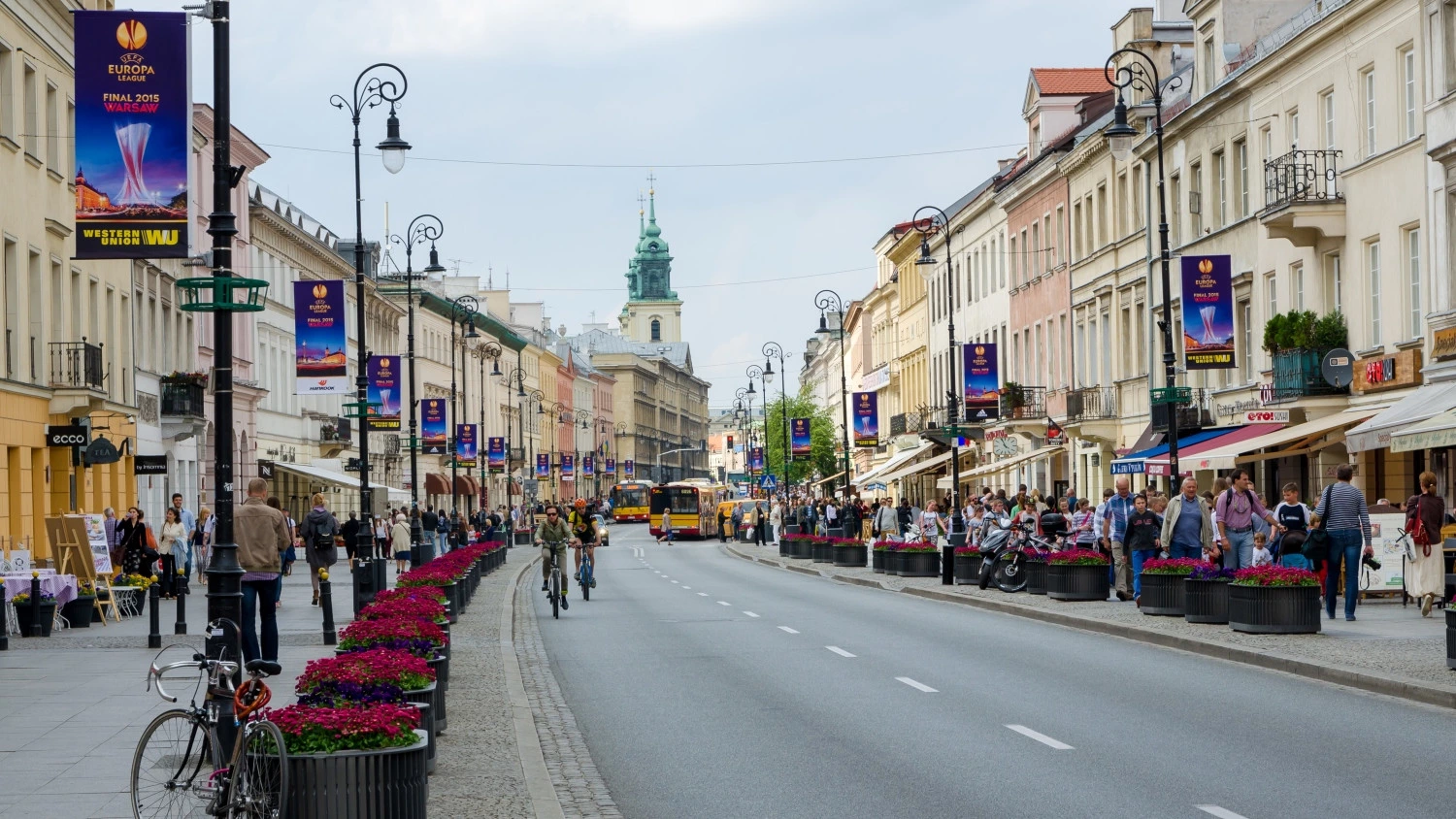
The City of Warsaw and JLL will implement a pilot program aimed at increasing the attractiveness of the Warsaw City Centre in the eyes of potential tenants and customers. The changes will be introduced starting with Marszałkowska and Aleje Jerozolimskie Streets.
The pilot program, aimed at expanding the retail trade in the centre of Warsaw, will be implemented in parts of both Marszałkowska and Aleje Jerozolimskie Streets. The strategy is the result of research conducted between May and September 2018 by experts from JLL. The company’s recommendations relate to both changes in the urban nature of the pilot scheme's area as well as property policy and other factors conducive to the development of retail trade.
On behalf of Warsaw City Hall, JLL has conducted three studies. The first was aimed at examining opinions of consumers regarding high street retailing in the downtown area of Warsaw. In the second, the experts focused on the retailers, that is to say potential tenants – and it was aimed at enquiring about the desired directions of change and identifying barriers for their development. In the third, JLL analyzed pedestrian traffic (footfall) in the selected pilot area.
“Thanks to the research carried out by JLL we were able to identify two areas suitable for implementing the pilot program - the middle stretch of Marszałkowska Street - from Plac Zbawiciela to Rondo Dmowskiego - and the eastern section of Aleje Jerozolimskie - from Rondo Dmowskiego to Rondo de Gaulle'a. The selected areas comprise sections of two of Warsaw city centre's major arterial routes for both private and public transport. The considerable number of premises in these areas is an important factor for the efficiency of the pilot program”, says Michał Olszewski, The Deputy Mayor of Warsaw.
Experts from JLL pointed out that the main factors that could contribute to the development of the retail sector in both locations include an increase in footfall, the construction of the Plac Konstytucji metro station, and the development of high quality, green public spaces. Furthermore, the city should ensure that the management of the premises located in both areas is based on a coherent strategy. In turn, the selection of tenants would rely not only on rent aspects but also on the goal of improving both the quality and uniqueness of the retail offer. What is also important is the impact that these tenants would have on the street itself. The attractiveness of the storefronts is one example, and with this, it would be of crucial importance to conduct consultations with marketing experts.
“When it comes to increasing the commercial potential of both locations, the matter of aesthetics is of crucial importance. In order to entice attractive tenants who can address the needs of the residents of Warsaw, the city should focus on repairing its run-down buildings. Moreover, it would certainly need to co-operate with the owners of private premises which should lead to reaching a compromise on the desired type of tenants, and eventually to an extension of opening hours. Of course, it is important to remember that the streets ought to be customer-friendly. This points to the need to look into the possibility of building additional crosswalks which would positively influence customer circulation. The launch of these actions is an opportunity for both locations to become a city landmark, as is the case in the capitals of Western Europe”, underlines Jan Jakub Zombirt, Associate Director, Strategic Consulting at JLL.
According to experts from JLL, the current condition of high streets mainly stems from a lack of a coherent image of these locations as shopping destinations. According to JLL, the factors that limit their growth potential include the small number of premises that meet the expectations of modern commercial tenants, the popularity of large shopping centres located in the centre of the city, a lack of a coherent policy concerning the development of high streets, fragmented ownership structure and conservation restrictions.



